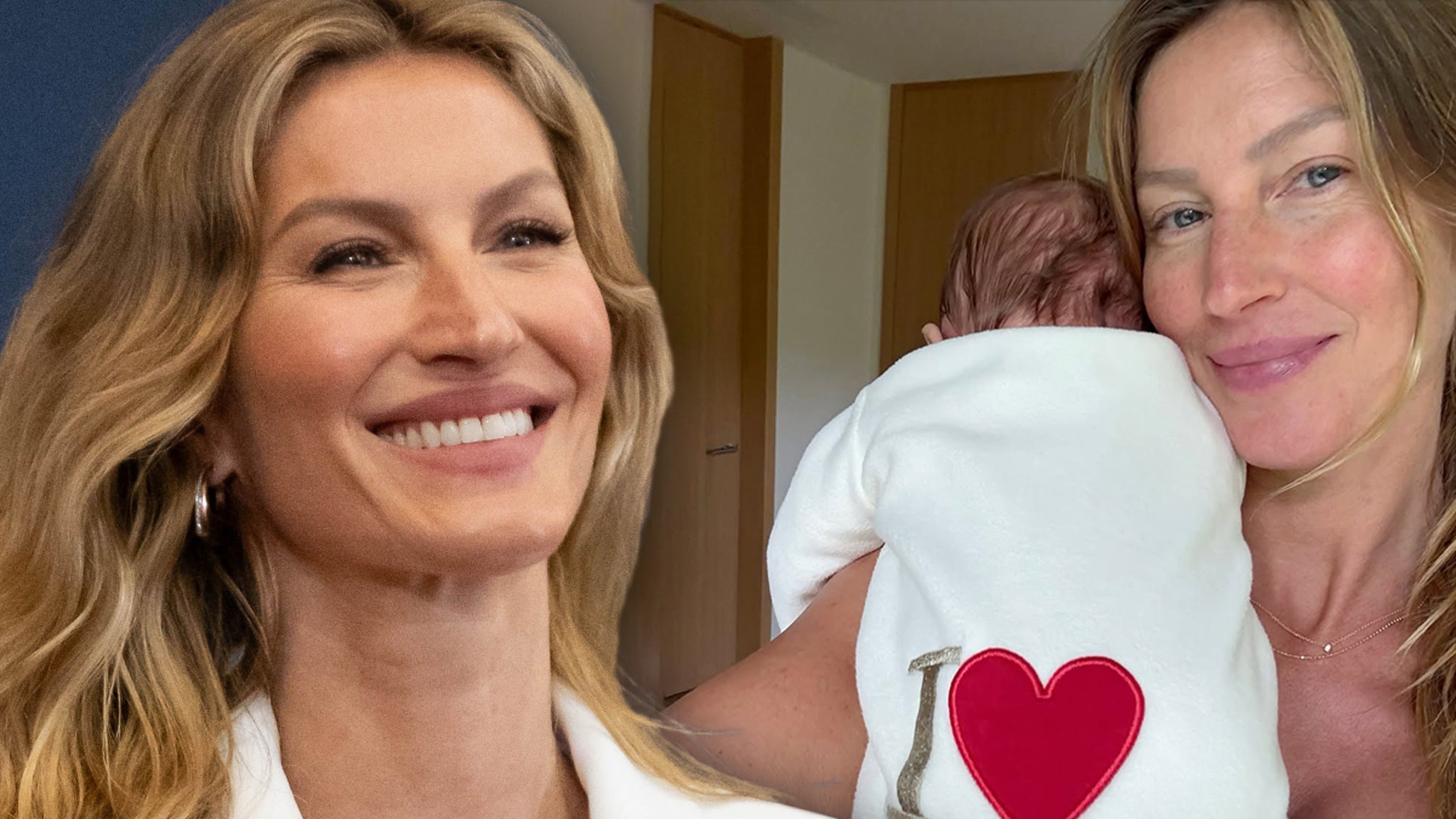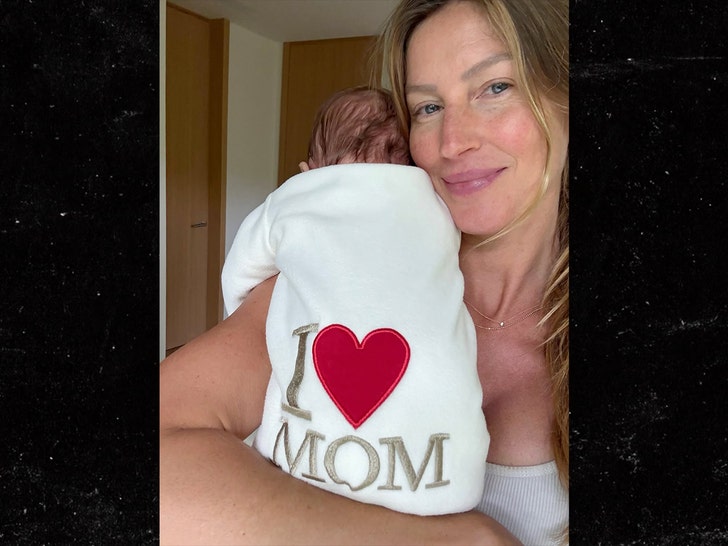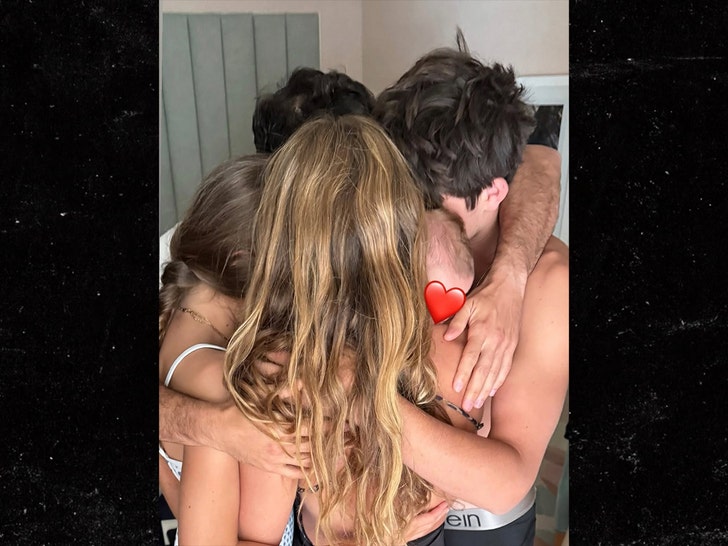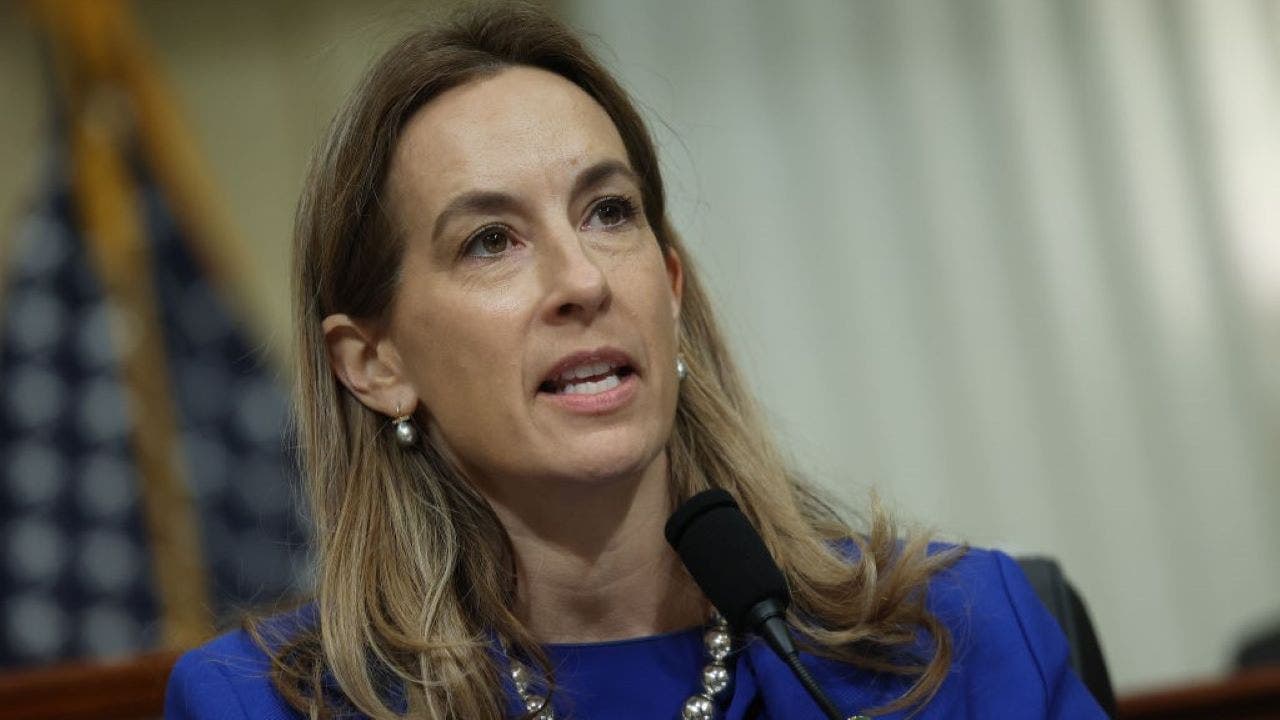Lifestyle
Audio Stories are Redefining Pleasure for Women

“You know, I’m a sucker for a California queen bed,” Liz says to her girlfriend, Sevyn.
“I’m imagining us chillin’ on that balcony,” Liz responds.
Sevyn laughs, “Well, there’s some other things I’m imagining too…”
Liz and Sevyn are characters in “Open Floor Plan,” a series on the audio erotica app Dipsea. Like mini podcasts but spicier, these stories detailing sexy scenarios fill the space between audio romance novels and visual pornography.
Since Dipsea began publishing at the end of 2018, a handful of similar apps have hit the market. While Dipsea’s stories are narrated by voice actors and written in-house, Quinn, another popular platform that launched in 2019, hires mostly content creators to produce the app’s stories. Other platforms like OhCleo and Bloom use a combination of those formats.
“
I
c
l
o
s
e
d
t
h
e
d
i
s
t
a
n
c
e
b
e
t
w
e
e
n
u
s
a
n
d
p
r
e
s
s
e
d
m
y
m
o
u
t
h
a
g
a
i
n
s
t
h
e
r
s
.
S
h
e
w
a
s
s
u
r
p
r
i
s
e
d
,
b
u
t
k
i
s
s
e
d
b
a
c
k
w
i
t
h
a
f
e
r
o
c
i
t
y
t
h
a
t
s
e
n
t
s
p
a
r
k
s
t
h
r
o
u
g
h
m
y
b
o
d
y
.
”
“There’s clearly this gap between what erotic content has traditionally meant and what women are looking for,” said Caroline Spiegel (sister of Snap’s chief executive, Evan), the founder of Quinn. “Now, there’s a growing opportunity to give women products and services that fill their sexual needs, because they have their own money to spend.”
Designed in sleek modern packages, these apps can easily be confused with those used for meditation, yoga or therapy — an intentional marketing plan. Situating pleasure in a wellness wrapper has allowed them to exist on Apple’s app store and Spotify, as well as advertise on Facebook and Instagram.
On average, subscribers for Dipsea are women between 18 and 34, the company said, while Quinn’s are women ages 18 to 24. Dipsea said its revenue grew 40 percent last year, though it declined to provide specific figures. Quinn said the average listenership for the past three months had been 14 million minutes each month. (“For context, in all of 2021, we saw 3.2 million minutes listened,” Ms. Spiegel said.)
“
H
e
w
a
l
k
e
d
b
e
h
i
n
d
m
e
a
n
d
r
a
n
h
i
s
h
a
n
d
s
o
v
e
r
m
y
s
h
o
u
l
d
e
r
s
,
t
h
e
n
d
o
w
n
m
y
a
r
m
s
,
g
e
n
t
l
y
g
u
i
d
i
n
g
m
y
w
r
i
s
t
s
b
e
h
i
n
d
m
y
b
a
c
k
.
I
s
w
a
l
l
o
w
e
d
a
s
m
a
l
l
m
o
a
n
.
”
Hannah Albertshauser and her husband, Michael, are the co-founders of Bloom, an erotic audio platform based in Germany. According to a survey they recently conducted, Bloom found that there were just as many users who enjoy romantic content as were interested in stories involving different kinks, partner sharing and bondage. Despite Mr. and Mrs. Albertshauser starting Bloom to create more guided sex options for couples, 40 percent of its listeners are single women and over half are between 18 and 34, according to the same survey.
Experts say that the biggest benefits of audio erotica are it allows listeners to imagine and be in control of their own story.
“I tell clients and students, if you’re constantly watching something, you’re never getting to create your own fantasies, explore your erotic imagination and know what your boundaries are,” said Mal Harrison, the executive director of the Center for Erotic Intelligence, a collective of researchers and educators who study human connection and sexuality. Audio erotica, she said, is a response to power imbalances and sexual domination often seen in visual pornography.
Before these apps existed, Reddit threads and the back alleys of Tumblr were often used to create erotic audio content particularly made by and for women.
“It felt like when you wanted accessibility to pleasure, it was in a brown paper bag down a dark alley,” said Dominnique Karetsos, the chief executive and co-founder of Healthy Pleasure Group, which invests in sexual health and technology companies, including Dipsea. When she started investing in the space nearly 10 years ago, the market was limited, she added.
But by the early 2010s, Ms. Karetsos said, products made for women’s pleasure were marketed through partnerships with retailers like Selfridges and Sephora. The accessibility to and demand for these items created “social permission,” she said, for women to talk about pleasure openly.
“
I
d
o
n
’
t
w
a
n
t
t
o
g
e
t
y
o
u
i
n
t
r
o
u
b
l
e
.
”
“
I
t
h
i
n
k
I
’
d
a
c
t
u
a
l
l
y
l
i
k
e
a
l
i
t
t
l
e
b
i
t
o
f
t
r
o
u
b
l
e
.
”
“
H
m
,
c
o
m
e
h
e
r
e
t
h
e
n
.
”
Last year a sexual rights group reported that Facebook rejected numerous women’s sexual health advertisements. In 2019, the sex toy company Dame sued the M.T.A. for banning its advertisements while those for erectile dysfunction medication remained.
Gina Gutierrez, who founded Dipsea with Faye Keegan, said that much of what set audio erotica apart was that it was marketed as sexual wellness, unlike conventional porn. “Female pleasure is seen as especially gratuitous and frivolous,” she said. “We wanted people to feel like they were making a choice that was good for them.”
‘It’s actually like a wellness practice’
Liv Trexler downloaded Dipsea in 2021 after seeing its advertisement on social media. “It was weird at first,” she said. “But when I actually tried it, things went well, very well.”
She now uses Dipsea regularly and said the $12.99 monthly subscriber fee was worth the cost. “It’s not harmful to those who make it, and it’s not a harmful thing to those who hear it,” said Ms. Trexler, a 29-year-old project manager who lives in Brooklyn. “It’s actually like a wellness practice.”
Angela Sarakan, a senior audio producer at Dipsea, said that the dialogue featured in its podcasts could provide listeners the tools to set healthy boundaries. “You’re listening in on the private worlds of these characters and, in that way, learning more about yourself and the way you might want to communicate or do things differently.”
“
I
d
o
n
’
t
w
a
n
t
t
o
r
e
g
r
e
t
m
i
s
s
i
n
g
t
h
e
m
o
m
e
n
t
a
n
y
m
o
r
e
.
”
“
J
u
s
t
f
o
r
t
o
n
i
g
h
t
.
”
“
G
e
t
i
t
o
u
t
o
f
o
u
r
s
y
s
t
e
m
s
.
”
“
Y
e
s
.
”
Audio erotica’s emphasis on communication and boundary-setting has helped some users with anxiety around visual porn.
“It was very hard for me to extricate any idea of sex, especially casual sex, from feeling safe,” said a 25-year-old woman who was a victim of sexual assault. The woman, who asked not to be identified, said audio erotica helped her reconnect with her body through imagination. “It helped me get out of my head a little bit in terms of self-consciousness, like comparing my movements and my body to people on the screen,” she said. “It made me see how you could have your sex life as part of a creative, imaginary life that feels meaningful.”
Olivia Taylor, the editorial lead of Dipsea, said the app’s goal is to capture the “texture of life and the texture of sex.” Dirty talk, moans and the ruffling of sheets are just some of the sounds you may hear on the app. Dipsea’s characters are often written with enough specificity for listeners to relate to, but vague enough for them to imagine themselves inside the story.
“It might make you be like, ‘Hey, wait, that’s not me, this is some other person or some other body that doesn’t feel like mine at all,’” Ms. Taylor said. The editorial team, she added, keeps this in mind as they edit.
“
H
e
r
e
,
c
l
i
m
b
i
n
t
o
b
e
d
w
i
t
h
u
s
.
Y
e
a
h
,
c
o
m
e
h
e
r
e
.
L
e
t
u
s
f
e
e
l
y
o
u
.
”
Aisha Jordan, an actress and a spoken word artist, was among the first to audition as a voice actress for Dipsea in early 2019. She landed the role of Liz and has since narrated many other stories. “Sometimes you’re breathing into a microphone for 20 seconds,” she said. “Sometimes you have to do something like kiss your hand to get a more authentic sound.”
Ms. Jordan receives a full character description and a story arc with each script. “It’s not just a sexual moment. It’s an experience,” she said. “Especially for a woman of color to be able to do this, it’s super exciting. It allows you to be seen as a full person and not just stereotypes.”
Although sexual wellness is a growing industry, research on the subject is still met with skepticism.
“It’s just highly stigmatized, more so than drugs,” said Dr. Nicole Prause, a neuroscientist who studies how pleasure can be used as a treatment for chronic pain, anxiety, sleep disorders and post-traumatic stress disorder. “I almost lost my graduate funding.” She said she no longer uses the word “sexual” in research proposals.
Dr. Prause hopes audio erotica will help raise awareness of the positive, if not therapeutic, outcomes of sexual wellness, though she recognizes its limitations.
Ms. Taylor of Dipsea believes that the format can at least offer an alternative. “We’re showing much more than a snapshot of sex,” she said. “It’s the whole story of how people connect.”
All clips from shows on Dipsea, from top to bottom: Familiar Face, “You Again”; Bound, “Meeting the Rigger”; Lone Wolf, “Take Me Somewhere”; Familiar Face, “You Again”; My Partner, “After the Bath.” Ear image via Getty Images.
Design and development by Shannon Lin.

Lifestyle
My Dad’s Death Taught Me How to Pray

As part of “Believing,” The New York Times asked several writers to explore a significant moment in their religious or spiritual lives.
Sign up to receive the latest installments of “Believing” in your inbox.
I was many weeks into reciting kaddish, the traditional Jewish prayer of mourning, for my father when I realized I did not know how to pray.
Oh, I knew the words and the melodies for the daily services I was attending — my father made sure of that, bringing me and my sisters to synagogue every Shabbat of our childhoods. I even knew what they meant, thanks to seven years at a Hebrew-speaking summer camp and four serving as Jerusalem bureau chief of The New York Times. I knew the choreography: when to sit, stand, bow, touch my fingers to my forehead or open my palms skyward.
I knew it all well enough to occasionally take my rightful place, as a mourner, leading the little group at my local Conservative synagogue some Sunday mornings.
What I was clueless about was God. How to talk to God, how to think about God, whether I believed in God, what he — my father — had believed. I knew what the words of the ancient texts meant in English, but not what they meant to me.
I decided maybe a year before Dad died that when the time came, I would take on the obligation of saying the Mourner’s Kaddish daily for 11 months, as outlined in Jewish law.
I had always found Jewish mourning rituals to be the most powerful part of our tradition. The communal aspect spoke to me: Kaddish is one of the prayers that require a quorum of 10 Jews, known as a minyan, and I appreciated both that I had to show up in public to fulfill this commandment and that strangers had to show up to make it possible. The daily commitment was daunting, but also appealing; a challenge, an opportunity, a statement to myself, to everyone around me and to my dead father that he and our tradition mattered to me.
Kaddish was also something I associated with Dad, whose booming voice whenever he was reciting the prayer on the anniversary of a loved one’s death still echoed in my head.
In the days following his death at 82, some of the loveliest memories people shared with us revolved around this ritual. How Dad made sure that prayer leaders did not go too fast for newbies or drown out women. Or how Dad had reconciled with his own father after decades of distance so he could say kaddish for him with less baggage.
I was excited, as a feminist and mostly Reform Jew, to take on an obligation that historically was the province of Orthodox men. The pandemic had made kaddish much more accessible and diverse: There was a Zoom minyan somewhere to dial into most hours of the day, some rooted in the traditional morning service, others involving meditation, study or song.
Everything made sense except the prayer part.
Kaddish may be the most famous Jewish prayer, infused into the broader culture — Sylvester Stallone recited it in “Rocky III,” and one of Allen Ginsberg’s most famous poems shares its title. It dates back to the first century B.C., and its Aramaic text does not mention death. Rather, it is a paean to God’s strength and sovereignty.
May your great name be blessed for ever and ever, is the central line. Blessed are you, whose glory transcends all praises, songs and blessings voiced in the world.
Scholars interpret this prayer being used for mourning as a declaration of acceptance that death is part of God’s plan. That works if you believe there is such a plan; if you believe in God; if you know what you believe.
Most mourners say kaddish in the same place most days, but my Reform synagogue only has services on Shabbat, so I stitched together a mosaic of minyans. (I’d decided to say kaddish once daily, not the traditional three times, usually at a morning service.)
On Sundays, I went to the Conservative shul in my town, and on Fridays, the Reconstructionist one. The other days, I’d video call into congregations across the United States, sometimes joining the ones where my sisters were saying kaddish, in Washington and Chicago. I said kaddish at a joint Passover-Ramadan breakfast, aboard New Jersey Transit commuter trains and outside a refugee center in Tbilisi, Georgia. I was good at focusing on Dad during the kaddish itself. But during the rest of the half-hour service — listening to the other prayers, reading memorial messages posted in the virtual chat on the side of the screen — my mind often wandered. Sometimes I checked Slack or email. I worried that I really wasn’t doing it right.
Back in religious school, I’d learned the mystical concept of keva and kavanah, Hebrew words that translate to “routine” and “intention.” The idea is that if you chant the same words every day, eventually, moments of connection will come. Kavanah is also translated as “sincere feeling” or “direction of the heart.”
I remembered asking, as a kid, how we would know when we got to kavanah. I don’t remember getting a good answer. Decades later, I was stuck in rote recitation — keva, keva, keva.
Until, as part of a Jewish study retreat in Maryland, I went on a walk in the woods with Rabbi Brent Chaim Spodek.
He called it a “soul stroll,” which sounded pretty hokey, but also as if it had a decent chance for kavanah. He led a little group on a light hike around a pond, stopping at beautiful spots to offer a few thoughts about the meaning of our familiar prayer book.
When we got to the central prayer, 19 blessings known as the Amidah, Rabbi Spodek summed it up as “Wow! Please? Thank you.” And that’s where it happened. I learned how to pray on my own terms.
“Wow” — shevach in Hebrew, or praiseworthiness — is about God’s awesomeness. Rabbi Spodek said he spends a minute or two pondering the miracle that is creation. That there is a (narrowing) climate in which humans can thrive. Plants and animals to nourish us.
“Please” — bakashot, or requests — is where we ask for things. Let my husband’s surgery succeed. Help my kid find his footing. Make me listen more. Big things, hard things, things we really need.
“Thank you” — hoda’ot — is like a gratitude journal. A yummy breakfast. A talk with an old friend. A walk in the woods.
It was hokey. But it worked. For the rest of my 11 months, whenever my mind wandered, I’d close my prayer book and close my eyes and try a little wow-please-thank you.
It did not instantly transform me into a believer. I still struggle, especially on the “wow” part, sometimes finding myself wow-ing God for making humans who figured out some technological, athletic or artistic miracle.
There are always plenty of pleases. And thanks, especially, for the nine other Jews who showed up so I could say kaddish for Dad, whatever he believed.
Jodi Rudoren is head of newsletters at The New York Times, where she previously spent 21 years as a reporter and editor. From September 2019 to April 2025, she was editor in chief of the Forward, the leading Jewish news organization in the United States.
Lifestyle
Gisele Bündchen Shares First Look at Child with Joaquim Valente

Gisele Bündchen
Another Reason to Celebrate Mother’s Day …
First Look at Newborn!!!
Published
Gisele Bündchen‘s got one more reason to celebrate Mother’s Day … and, she couldn’t help but share a snap of the kid — giving fans a first look at her son with Joaquim Valente!
The model shared a pic of the kid’s back … decked out in a white sweater with “I ♥️ Mom” written across the back of it. The boy’s holding tight to Gisele — face over her right shoulder and away from the camera.

Another pic shows Gisele, all of her kids and Valente embracing … with a heart strategically placed over her newborn’s face to obscure his features.
The two pics are part of a larger Mother’s Day Post … in which Gisele uses her caption to tell fans she’s been busy living life in recent months — though she admits she’s also keeping many of her recent developments to herself.

Gisele says she misses her mother quite a bit on the holiday … but adds her heart is full — ’cause being a mom is a wonderful gift that constantly teaches and fills her with gratitude.
She finishes off her caption by writing, “To all the mothers out there, your love shapes the world in ways words can’t describe. I see you, I honor you. Happy mother’s day! Sending so much love your way! ❤️”

As you know … Gisele gave birth to her third child in February — a boy named River.
She’s kept a pretty low-profile since giving birth … spending a ton of time with family. When she has stepped out — like to hang with pals Karlie Kloss and Ivanka Trump — River hasn’t really been with her or she’s hidden him well.
Gisele’s teasing fans with a couple photos of him now … and, reminding everyone about her exciting new reason to go hard on Mother’s Day.
Lifestyle
Jack Katz, Pioneer of the Graphic Novel, Is Dead at 97

The volumes were originally issued by the publishing arm of Comics & Comix, a retailer in Berkeley, and later by Bud Plant, a founder of Comics & Comix.
After completing his masterwork, Mr. Katz continued to paint and teach art. Along the way, he published two books on the art of anatomy, two volumes of sketchbooks and another graphic novel, “Legacy,” about the mysterious fate of a billionaire’s fortune, written with the comics veteran Charlie Novinskie.
Mr. Katz’s survivors include two sons, Ivan and David, and two daughters, Beth and Laura Katz, as well as grandchildren and great-grandchildren. His three marriages ended in divorce.
Around 2013 — the year Titan Comics reissued “The First Kingdom” — Mr. Katz embarked on an ambitious follow-up to his masterwork: a 500-page graphic novel called “Beyond the Beyond,” which he financed in part through the crowdfunding site Indiegogo, while toiling away on it up to 18 hours a day, often in his pajamas, he said in a 2015 video interview. He added that he already had the story by the time he was 12, and that “The First Kingdom” was basically its preamble.
“All of these people, they were, ‘Oh, you’re 45, you’re over the hill!’” he told ICv2, recalling the early days of “The First Kingdom.” “I’m 85 now! I’m ready to take on ‘Beyond the Beyond’!”
That work, completed in 2019, remains unpublished. Then again, Mr. Katz understood the challenges going in.
“For heaven’s sake,” he said, “you know, if you climbed Mount Everest one time, it’s not a snap the second.”
-

 Cleveland, OH1 week ago
Cleveland, OH1 week agoWho is Gregory Moore? Former divorce attorney charged for murder of Aliza Sherman in downtown Cleveland
-

 News1 week ago
News1 week agoU.S. and China Dig In on Trade War, With No Plans for Formal Talks
-

 Politics1 week ago
Politics1 week agoRep. Mikie Sherrill suggests third Trump impeachment as she campaigns to be next New Jersey governor
-

 Politics1 week ago
Politics1 week agoTrump posts AI image of himself as Pope amid Vatican's search for new pontiff
-

 News1 week ago
News1 week agoFamily statement: Rodney Hinton Jr. walked out of body camera footage meeting with CPD prior to officer death
-

 News1 week ago
News1 week agoAre Politicians Too Old? California Democrats Want to Debate an Age Cap.
-

 World1 week ago
World1 week ago‘Don’t see a major war with India, but have to be ready’: Pakistan ex-NSA
-
News1 week ago
Stock market today: Dow, S&P 500, Nasdaq futures jump amid jobs report beat, hopes for US-China talks


















